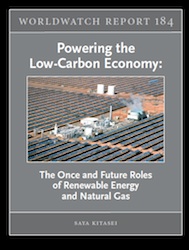U.S. exports of ethanol remained strong in October at 34.9 million gallons, according to the latest government information, with the total of January-October at a record high 286 million gallons. The current forecast is for the U.S. to export more than 325 million gallons of ethanol this year, more than double the previous record of 158 million gallons in 2008.
 In a post on the Renewable Fuels Association’s E-xchange blog, RFA’s Geoff Cooper explains that the totals include both denatured and undenatured (non-beverage) ethanol.
In a post on the Renewable Fuels Association’s E-xchange blog, RFA’s Geoff Cooper explains that the totals include both denatured and undenatured (non-beverage) ethanol.
Shipments of denatured ethanol totaled 21.9 million gallons, down from the 2010 high of 27.5 million gallons in September. Canada continued to serve as the top destination, with shipments of 13.2 million gallons of denatured product. The United Kingdom, Jamaica, the Netherlands, and Australia (in that order) rounded out the top five. These five destinations accounted for 98% of U.S. denatured ethanol export shipments in October.
As for undenatured (non-beverage) ethanol, U.S. producers exported 13 million gallons in October, up 15% from September. The United Kingdom was the top destination for undenatured product, followed (in order) by Mexico, Nigeria, the Netherlands and Australia.
Meanwhile, exports of the ethanol co-product distillers dried grains (DDGS) were down in October from September, but are still ahead of last year’s record level at 7.57 million metric tons. Last year the U.S. ethanol industry exported 5.64 million metric tons of distillers grains worth nearly $1 billion – this year the forecast is for about nine million.
Ethanol production is expected to reach 13.8 billion gallons this year, which would also be a record. As a percentage of average daily gasoline demand, average daily ethanol production for the week ending December 3 was 10.24% – the highest since weekly data became available, according to RFA. In the previous four weeks, RFA says ethanol producers averaged record outputs per day, using about 14 million bushels of corn each day to produce 902,000 barrels of ethanol and 105,973 metric tons of livestock feed, including 93,570 metric tons of distillers grains, and more than 4 million pounds of corn oil a day.
Despite all these records, USDA kept the forecast for corn used in ethanol production at 4.8 billion bushels, which caused American Farm Bureau Federation economist John Anderson to question why. “Ethanol production has continued to trend upward in recent weeks, and we would have expected USDA to show a small drop in the corn carryover level, or at least some adjustments within the various corn-use categories, but they didn’t. They basically stayed put with the demand side of the corn balance sheet,” said Anderson.
USDA’s chief economist Joe Glauber explained why they held the corn use for ethanol the same this month. “We’ve been looking at the weekly production numbers and we are certainly producing at a very strong rate. But what we’ve seen is a weakening in the returns to ethanol producers over the last few weeks,” Glauber said, causing them to decide not to change the number at this point. USDA had lowered corn production figures for this year in the November forecast, but will not update that figure until January, so it stands at 12.54 billion bushels.


 The
The 




 According to the
According to the 
